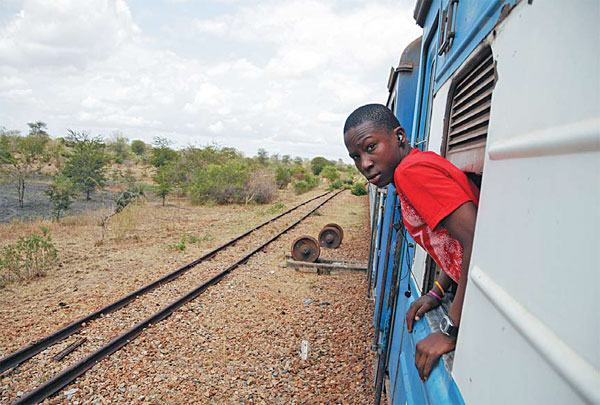Reforms to put Tazara Railway on firmer track
Tanzania and Zambia have vowed to accelerate reforms to allow them to run the Tazara Railway, the icon of China-Africa friendship and investment, in a more commercially viable and self-sustaining way.
A council of ministers for Tazara, the Tanzania Zambia Railway Authority, met in Dar es Salaam, Tanzania, late last month and directed the board of directors to accelerate amendment of the law governing operation of the line.
Among the goals are to improve services, cut losses, allow other operators to use the lines, more fully implement decentralization plans and find better ways to finance the railway in a sustainable manner, according to a communique the ministers issued.
|
|
The message is clearly that the railway should be run more like a business, with less political influence.
"The council has directed that other operators such as Zambia Railways Limited should be allowed to run both passenger and freight services all the way through to Dar es Salaam and that Tazara should equally be allowed to go all the way from Dar es Salaam to the Copperbelt, Lusaka or any part of Zambia," the communique said.
"In this regard, the board has been directed to work out modalities to allow other operators to access Tazara railway by the end of January 2015 or even earlier," the communique said.
Stretching 1,860 km from Dar es Salaam to Kapiri Mposhi in Zambia, the railway was built between 1970 and 1975 and formally handed over to the Tanzanian and Zambian governments in 1976. The Chinese government provided a total of $500 million in interest-free loans for the construction of the railway and technical and equipment support since its operation.
The project was meant to assist landlocked Zambia to break free from economic dependence on Zimbabwe (then Southern Rhodesia) and South Africa, both of which were ruled at the time by white-minority governments.
While the railway played a big role in the struggle for liberation in southern Africa, it has for years suffered from poor management, lack of wagons and locomotives, unreliable timetables and problems with track maintenance.
The council noted that performance had fallen to record low levels of less than 300,000 tons of freight a year in the recent past from a peak of 1.2 million tons a year in the late 1980s.
The two countries agreed to inject $25 million into the authority after the board of directors draws up a "comprehensive and bankable" business plan to map out the future of the railway line.
The decision on new funding came after the owners managed to provide only $6 million out of $80 million they had agreed to recapitalize the authority with.
The council asked that draft changes be submitted to the chairperson of the council by the end of last month and the business plan be presented at end of this month.
The council added that positions for some senior executives of the authority have gone unfilled for too long and that all positions should be filled by the end of next month.
During a visit to Tanzania in 2013, Chinese President Xi Jinping announced that China would like to take part in the revamping and operation of the railway.
Tazara that year unveiled a $122 million, five-year plan to buy 10 trains from China in order to raise annual cargo transport to 1.5 million tons by 2018.
Other plans included upgrading the existing track, improving telecommunications and signaling systems, and developing trading services and parking lots on earmarked network sections.
In December 2013, Tazara sealed a contract with the Chinese Civil Engineering and Construction Company for the manufacture and supply of four new locomotives and spare parts, adding to six that arrived earlier.
For China Daily



















